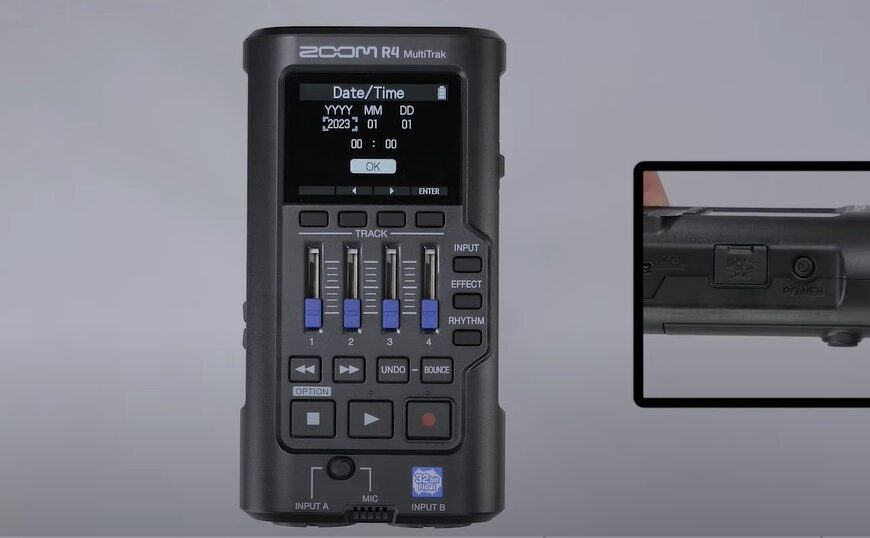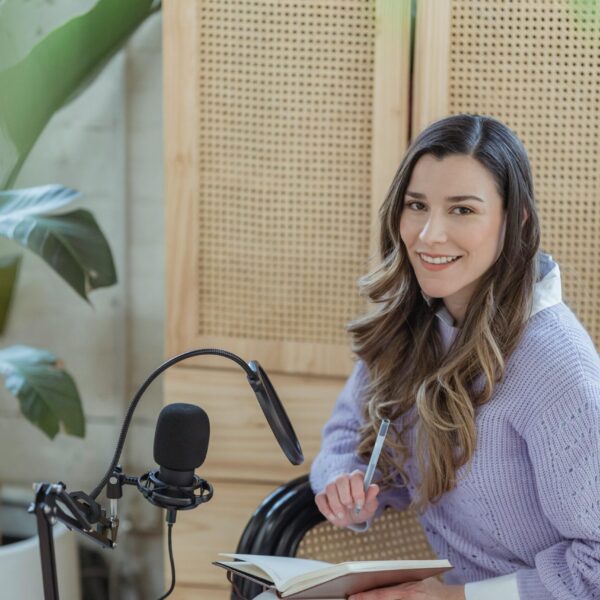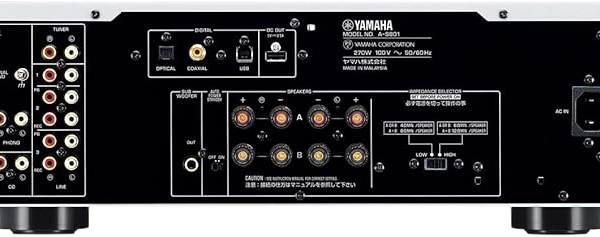Want to grow your brand while people actually listen? Start a business podcast—but not just any podcast.
With over 5 million shows fighting for attention (Spotify, 2024), launching one without a plan is like shouting into the void.
I made that mistake early on—hit record, uploaded, and hoped for the best. Nothing happened.
But once I followed a system, everything changed. Leads came in. Listens spiked. My brand suddenly had a voice.
In this guide, I’ll walk you through the 9 powerful strategies that helped me (and others) turn a simple podcast into a lead-generating machine.
Let’s unlock what actually works in 2025—no fluff, just clear steps you can follow.
Why Most Business Podcasts Fail
I saw many business podcasts falter due to a lack of effective strategies and direction. To ensure your podcast stands out and achieves its objectives, it’s important to understand the common pitfalls and proactively address them.

Your Podcast Should Be Built Around Your Ideal Client
If your podcast doesn’t speak directly to your target audience’s world, it’s just background noise.
Start by nailing down your ideal listener. Think: Who exactly am I trying to help or entertain?
You need real clarity. Not vague guesses like “entrepreneurs” or “young people.” That won’t cut it.
I learned this the hard way in my first podcast. I was pumping out content I thought people wanted. Result? Crickets.
Pain points, dreams, daily struggles—this is what your content has to answer.
Here’s the trick: stop guessing what your audience wants. Just ask them.
Run quick Instagram polls. Drop a Google Form in your newsletter. Use tools like AnswerThePublic, Reddit, or even Quora to dig into what your audience is already asking.
A 2024 Nielsen Podcasting report found that 73% of weekly podcast listeners tune in to learn something new. So if you’re not solving problems or offering unique insight, you’re already losing them.
Tailor each episode around real issues your ideal client deals with. No fluff. No general advice. Just laser-focused value.
For example, if you run a podcast for early-stage SaaS founders, don’t talk about “growing a business.” That’s too broad. Instead, go deep on “how to build an onboarding sequence that converts trial users.”
That’s how you become a go-to.
Don’t be afraid to get personal. I once shared how I totally bombed a launch because I skipped user research—and that episode outperformed all my previous ones combined. Vulnerability = connection.
Also, critique your own niche. If everyone’s saying “create more content,” maybe your episode can be “why more content won’t save your brand if your offer sucks.”
People respect honesty more than another echo chamber.
And please—for the love of ears—don’t stretch 10 minutes of value into a 45-minute monologue. Cut the fat. Your audience will thank you by sticking around.
One more thing: keep listening to your listeners. Their needs evolve. Your show should too.
According to Edison Research, 62% of podcast listeners say they’re more likely to buy from brands that understand their challenges. So understanding = conversion.
Podcasting isn’t just a content game. It’s a trust game.
Give people real help, real talk, and something they actually look forward to. That’s how you win.
✌️
Your Podcast Should Help You Reach Your Business Goals
Define clear objectives for your podcast aligned with your overall business goals. Whether it’s lead generation, brand awareness, thought leadership, or community building, ensure each episode contributes to these objectives. I want you to set measurable key performance indicators (KPIs) to track the impact of your podcast on achieving these goals.
Tip: Develop a content calendar outlining episode topics, guest appearances, and promotional activities aligned with your business objectives. Regularly evaluate your podcast’s performance against established KPIs and iterate your strategy based on insights gathered.
Your Podcast Should Stand Out Like Your Brand
In a sea of thousands, if your show doesn’t grab attention fast, it disappears into the noise. Your podcast’s Unique Value Proposition (UVP) is what makes people click, listen, and come back. It’s the simple reason why someone would choose your podcast over another.
I learned this the hard way. Back when I launched my first show, I thought just “being helpful” was enough. But without a defined UVP and brand identity, my episodes felt like white noise.
So what should your UVP be? Think of what only you can offer. Expertise, a unique tone, a bold opinion, an untapped story. Maybe you’re a fitness coach talking about mental health for lifters, or a former FBI agent breaking down true crime. Whatever it is, make it clear from the title to the trailer.
And your brand identity? That’s how your show looks, sounds, and feels. It should match your values and the vibe your listeners crave. For example, if your brand is bold and unfiltered, don’t hold back with a generic intro. Use raw language, snappy music, and storytelling that punches.
🎯 Quick tip: Use audience psychology. People crave emotion, clarity, and story. So don’t just share facts—build narratives. A study by Nielsen shows that podcasts using storytelling formats saw 22% higher retention (source).
Formatting matters. If you’re doing long monologues, test shorter 10-minute daily thoughts. Got interviews? Add personal reaction segments. Try unique hooks like real-time feedback, audience call-ins, or rapid-fire Q&As. Even something like “Podcast in the Dark”—a show recorded with all lights off for moody topics—could work if it matches your brand.
📊 Competitive analysis is your edge. Don’t guess—spy on your competition. Tools like Rephonic or ListenNotes can show what’s trending and what’s missing. For example, a Rephonic scan of wellness podcasts revealed a gap in shows covering science-backed habits for shift workers. That’s an opening.
Leverage what you already have. If you’re a writer, create podcast essays. If you have strong visuals, turn your audio into Instagram carousels or audiograms. And please—don’t copy top creators. Understand what they do well, then do it your way.
I’ve found that adding raw moments—like when I shared my burnout story in Episode 12—tripled the episode’s shares. Listeners told me it felt “human.” That’s your goal: create connection.
Not every idea will hit. You’ll try things that flop. I once spent 3 weeks editing a “cinematic episode” that nobody finished. But I learned. Now I test formats fast and use analytics like Spotify Wrapped and Chartable to double down on what works.
🔍 Remember this: listeners don’t care about your content—they care about what it does for them. Entertain. Solve a problem. Make them feel less alone. That’s how you build loyalty.
💬 As marketing strategist Ann Handley puts it, “Good content isn’t about storytelling. It’s about telling a true story well.”
So don’t just launch a podcast. Launch a podcast with a mission—and make that mission obvious from the first second.
Want to stand out? Be memorable. Want to be memorable? Be real, bold, and specific.

Your Podcast Should Act Like a Lead Magnet
Your podcast can serve as a powerful lead generation tool, attracting qualified leads and nurturing them through the sales funnel. Implement strategies to drive traffic from your podcast to your website, landing pages, and other conversion assets. Offer exclusive content, promotions, or lead magnets to incentivize listener engagement and capture contact information.
Tip: Incorporate clear calls-to-action (CTAs) within your podcast episodes, directing listeners to relevant resources, offers, or contact channels. Implement tracking mechanisms such as unique URLs or promo codes to measure the effectiveness of your podcast in generating leads and conversions.
Your Podcast Should Be a Simple Process
Efficiency and consistency are paramount in podcast production and publishing. Streamline your workflow by establishing standardized processes for content creation, recording, editing, and distribution. Leverage automation tools, templates, and project management systems to streamline collaboration and minimize time-consuming tasks.
Tip: Develop a content production schedule with designated roles, responsibilities, and deadlines to ensure smooth execution and timely delivery of episodes. You want to continuously optimize your workflow based on feedback and performance metrics to maximize productivity and minimize resource constraints.

Prepare Episode Outlines Ahead of Time
Thorough preparation is the cornerstone of engaging and informative podcast content. Develop detailed episode outlines encompassing key topics, discussion points, and interview questions. Share these outlines with co-hosts, guests, or production teams to ensure alignment and facilitate smooth recording sessions.
Tip: Research trending topics, industry news, and audience interests to inform your episode topics and content. Incorporate storytelling, anecdotes, and real-life examples to enhance engagement and captivate listeners throughout the episode.
Record a Day or Two Before Your Release Date
Recording episodes in advance provides flexibility and ensures consistent quality in your podcast releases. Aim to schedule recording sessions at least a day or two before the intended release date to allow ample time for editing, polishing, and promotional activities. If you are having trouble in scheduling, you should hire a Virtual Assistant from platforms like Fiverr.
Tip: Create a recording environment conducive to clear audio quality, free from background noise and distractions. Test your equipment, microphone setup, and recording software before each session to minimize technical issues and optimize sound quality.
Optimize Your Sound by Practicing
Sound quality can make or break your podcast—simple as that. If it’s hard to hear, full of noise, or just plain unpleasant, listeners won’t stick around. According to a study by Discover Pods, over 60% of listeners drop a show due to bad audio, no matter how great the content is. So yeah, it’s a big deal 🎧
When I started my own show, I thought, “content is king.” It is—but poor audio kills the king. My first few episodes were a mess: echoey rooms, laptop mic, random fan noise. People kept messaging me things like, “Hey, love the topic, but couldn’t hear a thing!” I got the message loud and clear.
Start with the basics. Use a good microphone, not your phone or built-in laptop one. Even a $60 USB mic can level up your sound game. I use the Audio-Technica ATR2100x, and for the price, it’s a beast—clear vocals, zero fuzz. Pair it with decent headphones like the Sony MDR-7506 to catch small issues. Add an audio interface if you’re going XLR, something like the Focusrite Scarlett 2i2—reliable, crisp, no frills.
But gear’s not everything. Mic technique matters. Sit 4–6 inches from the mic. Don’t breathe into it like Darth Vader. Angle it slightly off-axis to avoid pops. And for the love of clean audio, record in a quiet room. Soft furniture, carpets, or even a blanket over the desk can help dampen echoes.
Here’s something most beginners ignore—levels. Keep them steady. No one wants to turn up the volume just to be blasted the next minute. I use free tools like Auphonic to even things out and add loudness normalization (target around -16 LUFS for podcasts—trust me, it works).
Post-production is your best friend. I use Audacity, free tools like Audacity or Reaper do the job. Learn basic EQ: cut muddiness around 200–400Hz, brighten vocals with a touch at 4kHz, and kill low-end rumble below 80Hz. Noise reduction tools are lifesavers when you can’t control your environment—iZotope RX is pricey but worth it.
Want a pro tip? Always monitor your sound while recording. I made that mistake once—interviewed a guest for 40 minutes only to find out I had recorded my laptop mic. Rookie mistake 😅
Room acoustics matter more than you think. I once recorded in a kitchen—bad idea. Tile reverb, fridge humming, nightmare. Now I record in my closet (seriously). It’s dead quiet, clothes act like foam, and the sound is 🔥
Even NPR’s audio engineer, Shawn Fox, says, “You don’t need a million-dollar studio. You need consistency, clarity, and control over your space.” I agree 100%.
If you’re still unsure, record test clips in different rooms, with and without filters. Tweak one thing at a time. You’ll be surprised how much clean sound builds trust with listeners. A great voice, recorded well, just feels credible.
Bottom line? Invest a little time and gear, and your podcast will sound 10x more professional. Great content deserves great sound. Without it, no one hears your message.
📊 According to a 2024 report by Podcast Insights (source), sound quality ranked as the second most important factor in podcast retention, right after topic relevance. That says it all.
Invest in high-quality recording equipment, including microphones, headphones, and mixers or audio interfaces to capture crisp and professional audio. Experiment with different recording environments, acoustics and post-production techniques to achieve optimal sound clarity and consistency.
So don’t cut corners. Sound quality isn’t optional—it’s your first impression.
Pay Attention to Umms, Aahhs, and Pops
Polished and professional delivery enhances the credibility and engagement of your podcast content. Minimize verbal fillers, pauses and distracting noises such as “umms,” “aahhs,” and pops through careful editing and mindful speaking habits.
Tip: Conduct regular self-assessments and peer reviews to identify and address common speech patterns or habits that detract from the clarity and flow of your podcast delivery. Utilize editing software and techniques to remove or mitigate unwanted sounds and pauses while maintaining natural flow. If you want to come in contact with the best editors in the market to do these hectic jobs for you, visit soundorp.com/services
FINAL WORDS
Following these nine secrets into your business podcasting strategy can elevate your podcast’s impact, reach, and effectiveness in achieving your business objectives. By understanding your audience, setting clear goals, and implementing best practices in content creation, production, and promotion, you can create a compelling and successful podcast that resonates with your target audience and drives tangible results for your business.
Get your complete podcast equipment setup by visiting Podcast Equipment Bundle. Get in touch with podcasting services and experts those will save you tons of time at Podcast Production Services.
With that being said, Let’s connect with all such free and paid tool/services you might need knowingly or unknowingly to fuel your growth. Here’s 21 BEST AI TOOLS AND PLATFORMS TO GROW YOUR PODCAST AND CONTENTS. There are some bonus tools in the end too to make your day to day life easier.
There are some affiliate links on this page that will redirect you directly to the original products and services. Also by buying through those links you will be supporting us. So thank you ^.^



